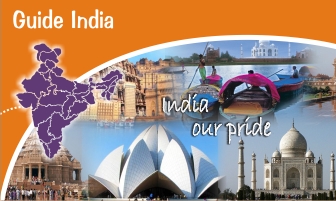|
Healthcare in India
Healthcare is one of India’s largest sectors, in terms of revenue and employment, and the sector is expanding rapidly. During the 1990s, Indian healthcare grew at a compound annual rate of 16%. Today the total value of the sector is more than $34 billion. This translates to $34 per capita, or roughly 6% of GDP. By 2012, India’s healthcare sector is projected to grow to nearly $40 billion.
The ministry of health as well as family welfare in 1989 had 10157 civilian hospitals in all the state as well as union territories. In 1991, 811000 hospitals and facilities beds were recorded. The health care in India has distributed the hospital based on the local socioeconomic conditions. Uttar Pradesh, the most populous state, had 735 hospitals in 1990 with a 139 million population and Kerala in 1991 had a 29 million population had 2053 hospitals.
The private sector accounts for more than 80% of total healthcare spending in India. Unless there is a decline in the combined federal and state government deficit, which currently stands at roughly 9%, the opportunity for significantly higher public health spending will be limited. Growing population and economy One driver of growth in the healthcare sector is India’s booming population, currently 1.1 billion and increasing at a 2% annual rate. By 2030, India is expected to surpass China as the world’s most populous nation. By 2050, the population is projected to reach 1.6 billion.
Tuberculosis:
Tuberculosis has had a world wide resurgence including in India. It is estimated lhai about 14 million persons are infected, i.e. 1.55 of total population suffer from radio logically active Tuberculosis. About 1.5 million cases are identified and more than 300 000 deaths occur every year Between NFHS 1 and NFHS 2 the prevalence has increased from 4678 per lakh population to 544. Unfortunately, prevalence among working age adults (15-59) is even higher as 675. All these may well be underestimates in so far as patients are traced only through hospital visit. Only about half reach the hospital. Often wrong diagnosis by insufficiently trained doctors or misunderstood protocols is another key problem both public and private sectors. TB is a wide spread disease of poverty among women living and working in ill ventilated places and other undernourished persons in urban slums it is increasingly affecting the younger adults also in the economically productive segments. No universal screening is possible. Sputum positive test does not precede diagnosis but drugs are prescribed on the basis of fever and shadows as a result incomplete cure becomes common and delayed tests only prove the wrong diagnosis too late. Improved diagnosis through better training and clear protocols and elimination of drug resistance through incomplete cure should be priority. Treatment costs in case of drug resistance can soar close to ten times the normal level of Rs. 3000 to 4000/-per person treated. Similarly even though the resistant strain may cover only 8% at present, it could suddenly rise and as it approaches 200/o or so, there is a danger that TB may get out of control. The DOTS programme trying for full compliance after proper diagnosis is settling down but already has some claims of success. More tan 3000 laboratories have been set up for diagnosis and about 1.5 lakh workers trained and with total population coverage by 2007 cure rates (already claimed to have doubled) may rise substantially. There is reason to hope that DOTS programs would prove a greater success over time with increased community awareness aeneration. The key issue is how soon and how well can it be integrated into the PHC system and made subject to routines of local accountability, without which no low cost regime of total compliance is feasible in a country as large as India.
The private medical sector and the escalating middle class have caused the emergence of establishing hospitals as well as health care in India on profit basis. The medical colleges have also increased now and the medical practitioners and registered nurses. However traditional practitioners pursue their practice in the name of ayurveda dealing with herbal medicines.
|
|
